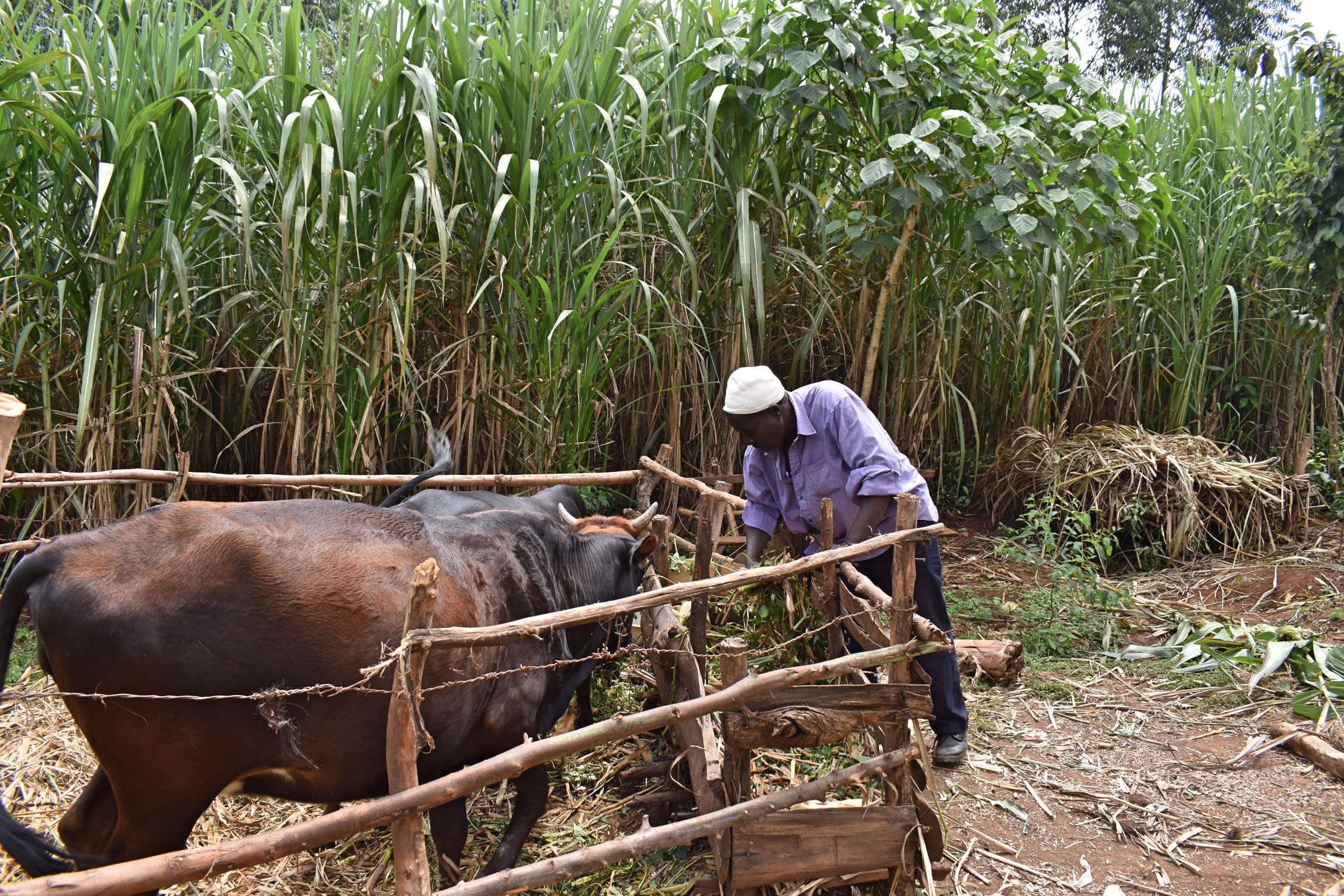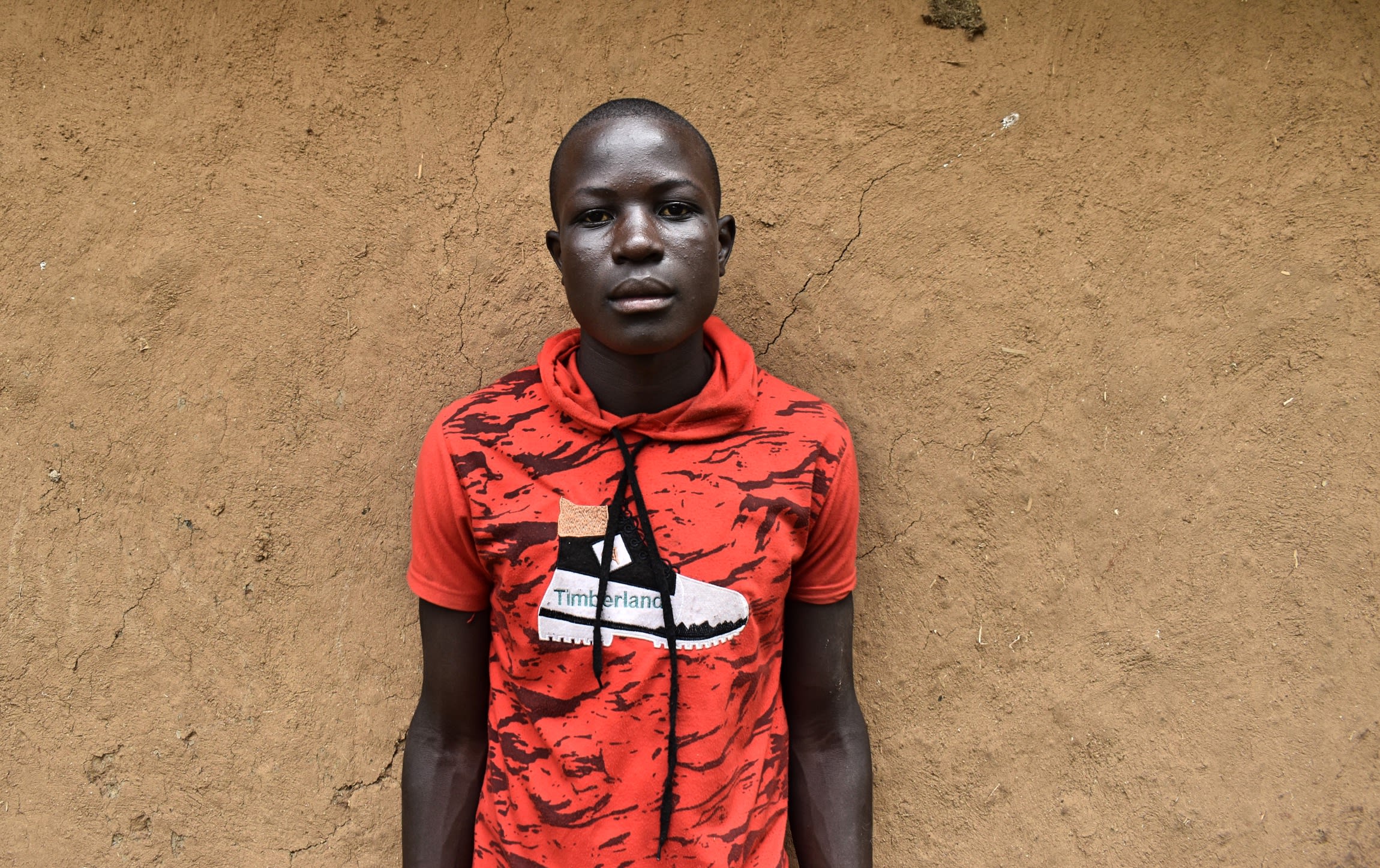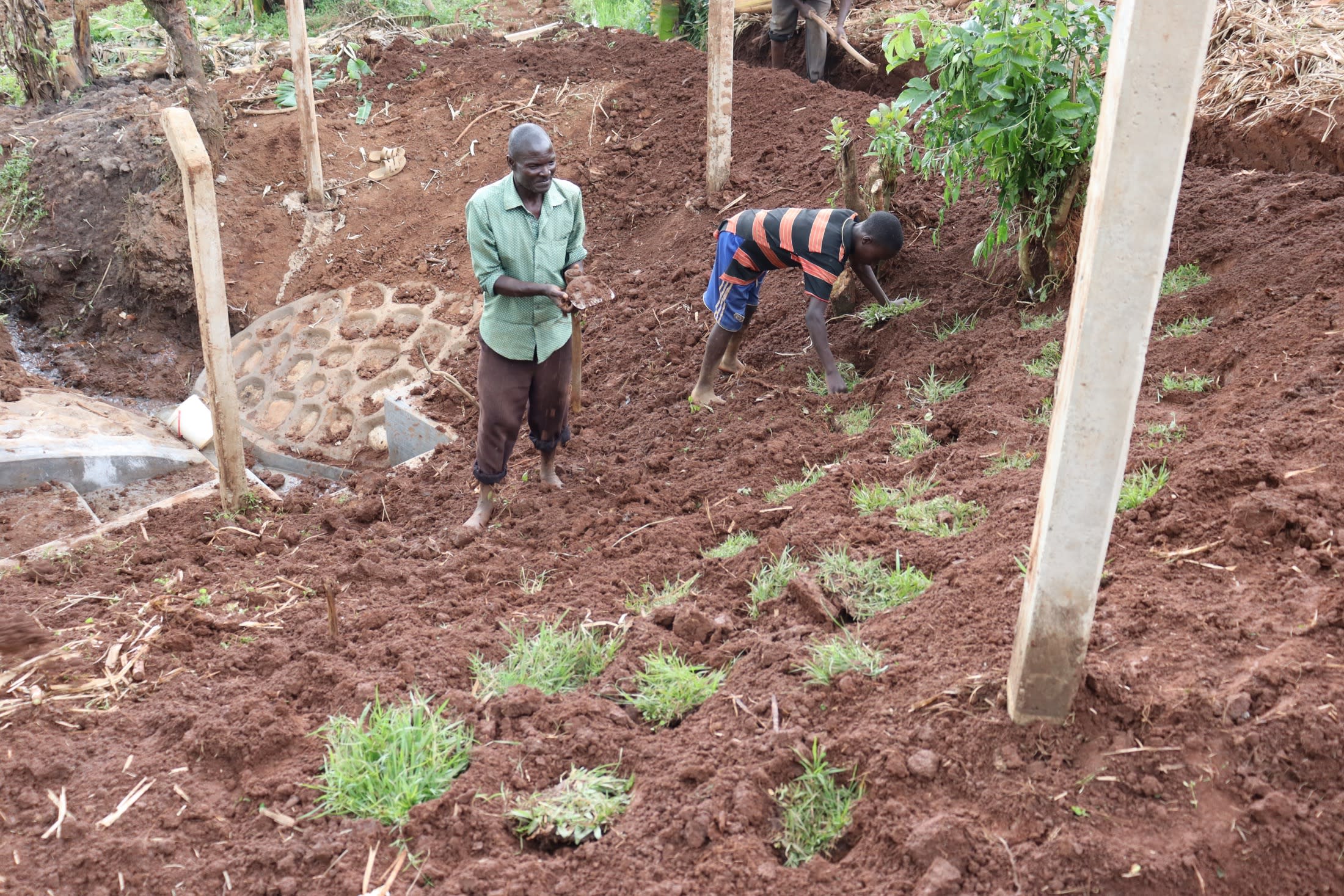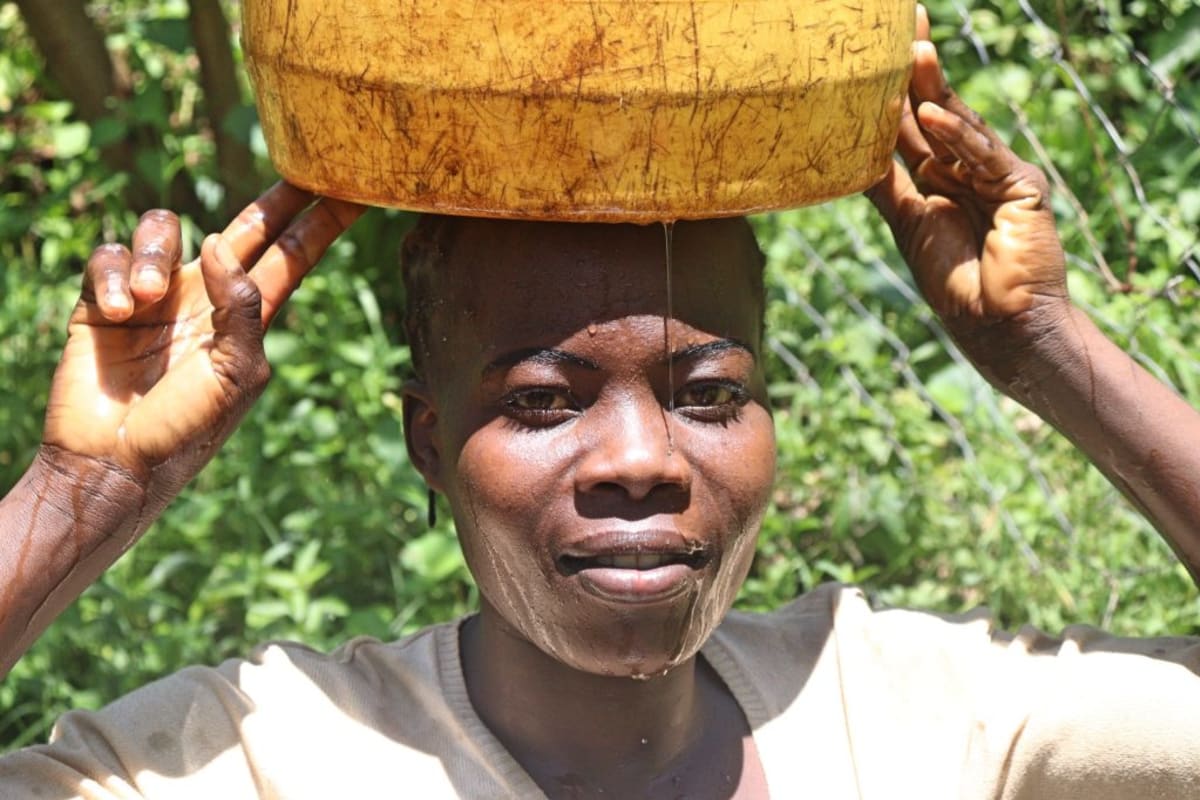105 people live in Shiyenga Community, and all of them need to collect water around the same times each morning and night. During these times, everyone forms a queue, watching and waiting, while others carefully scoop water from the shallow spring cupful by cupful to fill their jerrycans.

If water fetchers are too hasty, they'll stir up the muck on the bottom of the spring, filling all the subsequent jerrycans with flecks of dirt and debris. But if they take too much time, they risk their neighbors' ire.
"The amount of time spent going for water throughout the day ends up affecting my productivity in the long run," said 58-year-old farmer Patrick Mbote, shown below feeding his cows.

"I get very little time to study and even play with my friends because most times after school I have to go out and fetch water to be used at home," said Joshua O., 16 (in the below photo).

But wasted time and short tempers are not the only problems with drinking water from the unprotected spring. Many people reported that drinking the water from Sakini Major Spring makes them ill with typhoid, parasitic infections, dysentery, and more.
“Better water sources also mean less expenditure on health, as people are less likely to fall ill and incur medical costs, and are better able to remain economically productive. With children particularly at risk from water-related diseases, access to improved sources of water can result in better health and therefore better school attendance, with longer-term consequences for their lives.” - WHO Africa
Protecting the spring will not only curb water-related disease for anyone ingesting its water, but the installed discharge pipe will allow anyone to place their jerrycan beneath the water's flow to be filled in seconds. With this much safer and faster method, hopefully peace will be restored amongst the people of Shiyenga.
What We Can Do:
Spring Protection
Protecting the spring will help provide access to cleaner and safer water and reduce the time people have to spend to fetch it. Construction will keep surface runoff and other contaminants out of the water. With the community’s high involvement in the process, there should be a good sense of responsibility and ownership for the new clean water source.
Fetching water is a task predominantly carried out by women and young girls. Protecting the spring and offering training and support will, therefore, help empower the female members of the community by freeing up more of their time and energy to engage and invest in income-generating activities and their education.
Training on Health, Hygiene, COVID-19, and More
To hold trainings during the pandemic, we work closely with both community leaders and the local government to approve small groups to attend training. We ask community leaders to invite a select yet representative group of people to attend training who will then act as ambassadors to the rest of the community to share what they learn. We also communicate our expectations of physical distancing and wearing masks for all who choose to attend.
The training will focus on improved hygiene, health, and sanitation habits in this community. We will also have a dedicated session on COVID-19 symptoms, transmission routes, and prevention best practices.
With the community’s input, we will identify key leverage points where they can alter their practices at the personal, household, and community levels to affect change. This training will help to ensure participants have the knowledge they need about healthy practices and their importance to make the most of their water point as soon as water is flowing.
Our team of facilitators will use a variety of methods to train community members. Some of these methods include participatory hygiene and sanitation transformation, asset-based community development, group discussions, handouts, and demonstrations at the spring.
One of the most important issues we plan to cover is the handling, storage, and treatment of water. Having a clean water source will be extremely helpful, but it is useless if water gets contaminated by the time it is consumed. We and the community strongly believe that all of these components will work together to improve living standards here, which will help to unlock the potential for these community members to live better, healthier lives.
We will then conduct a small series of follow-up trainings before transitioning to our regularly scheduled support visits throughout the year.
Training will result in the formation of a water user committee, elected by their peers, that will oversee the operations and maintenance of the spring. The committee will enforce proper behavior around the spring and delegate tasks that will help preserve the site, such as building a fence and digging proper drainage channels. The fence will keep out destructive animals and unwanted waste, and the drainage will keep the area’s mosquito population at a minimum.

 Protected Spring
Protected Spring
 Rehabilitation Project
Rehabilitation Project



































